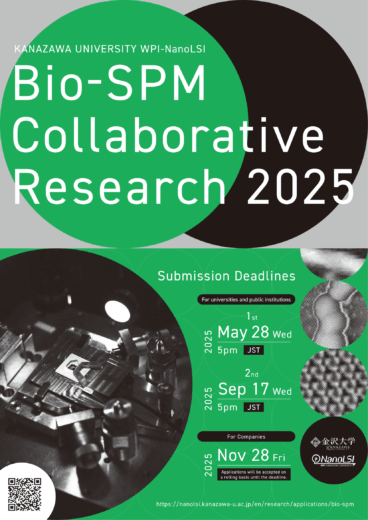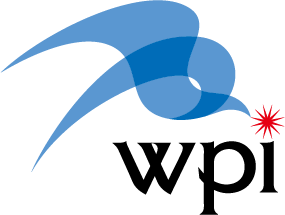
 The Nano Life Science Institute (WPI-NanoLSI), Kanazawa University, is calling for applications for 2025 Academic Year Bio-SPMs collaborative research.
The Nano Life Science Institute (WPI-NanoLSI), Kanazawa University, is calling for applications for 2025 Academic Year Bio-SPMs collaborative research.
For universities and public institutions |
For companies |
|
Application Guideline (for universities and public institutions) |
|
|
Form 1 Application and Collaborative Researcher Approval Form |
Form 4 Application and Collaborative Researcher Approval Form |
|
Form 2 Research Report PDF Word |
|
|
Form 3 Research Report Summary PDF Word |
|
Submission of reports for the 2024 Academic Year Bio-SPMs Collaborative Research
An approved researcher has an obligation to report the research results when the research period is over. Using Forms 2 and 3, prepare and submit the research report. The deadline is May 9, 2025. The summary of research results (Form 3) will be publicly posted on the NanoLSI Bio-SPMs Collaborative Research website in the 2025 academic year.
|
Form 2 2024 Academic Year Bio-SPMs Collaborative Research, Research Report PDF Word |
|
Form 3 2024 Academic Year Bio-SPMs Collaborative Research, Research Report Summary PDF Word |
Submission Destination
Nano Life Science Institute, Kanazawa University,
Kakuma-Machi, Kanazawa, 920-1192, Japan.
E-mail: nanolsi_openf01*ml.kanazawa-u.ac.jp
Please replace the asterisks (*) with @.

